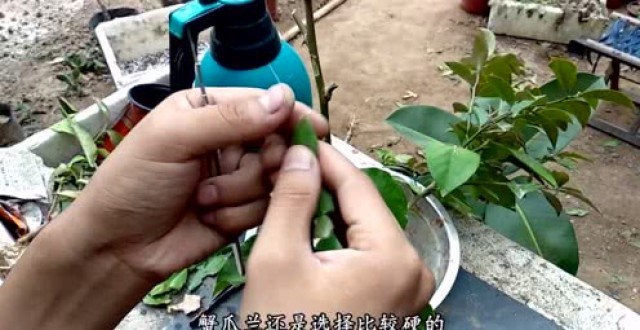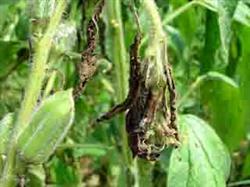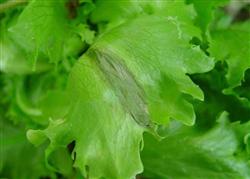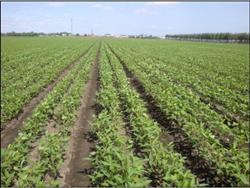pith Learn more about pith
-
Why is bacterial pith necrosis easy to occur in tomato?

Bacterial pith necrosis is an important disease in tomato cultivation, which seriously affects the yield and quality of tomato. Sometimes even lead to the whole shed out of production, why bacterial pulp necrosis easy to occur? Let's take a look at it together. 1. Environmental causes
2020-11-09 why tomato bacterial pith necrosis easy to occur -
Crab claw orchids will not be grafted. Pith grafting is easier to survive in this way.

Crab claw orchid will not be grafted, in this way, pith grafting is easier to survive like raising flowers follow official account: raise flowers (hcqzj521) more knowledge of growing flowers is waiting for you.
2018-09-29 -
Grafting technique of Pinus koraiensis by terminal bud split grafting

Pinus koraiensis (PinuskoraiensisSieb.etZucc.) is a tall tree of Pinus family with a straight trunk. The average height of the natural forest of Pinus koraiensis can reach 250m, the DBH can reach 40~80cm, and its life span can reach 30000years. In the place where the growth conditions are suitable, the height of the tree can reach 40m, the DBH can reach 200cm, and the life span is about 500years. It has excellent material, straight texture, strong pressure resistance, rich resin, strong decay resistance and high technological value.
2019-01-15 -
What are the effects and effects of Tongcao, a traditional Chinese medicine? How much is the price per jin? How to take the milk effect is good?

Tongcao, alias Cote, Li Nan, Huo Li, relying on Shang, flowers and plants, is the stem pith of Araliaceae plants. Produced in Guangxi, Sichuan, Guizhou, Yunnan and other places, is a moderately priced medicinal herbs, what are the efficacy and effects of Natongcao? How much is the price per jin?
2020-11-09 Traditional Chinese medicine Tongcao of efficacy and effect have what price -
Key points of Prevention and Control of Stem Blight of Carnation

Main points of identification: stem blight of carnation affects the root, stem and leaf sheath of the plant. The diseased part turned brown, the leaves withered and yellowed from bottom to top, the stem dried up in the earth, and the stem pith turned brown and rotten. Occurrence characteristics: the pathogen is fungus. The pathogen overwinters in the soil as chlamydospores or mycelia in diseased remains.
2018-10-21 -
How to prevent celery hollow?

What causes celery to be hollow? How to prevent celery hollow? Please also have experience to help introduce celery hollow mainly by petiole close to the pith parenchyma, rupture atrophy, resulting in pith cavity enlargement to form hollow. Celery cellulose after hollow increase, quality deterioration, yield decline, celery commodity...
2018-07-17 -
Control methods of sesame bacterial wilt

First, the symptoms showed that sesame bacterial wilt occurred early, the root turned brown at the initial stage, the top of the plant drooped, and then dark green patches appeared on the stem, and gradually deepened and blackened. The leaves gradually drooped from top to bottom, the diseased plants were shorter than the healthy ones, the vascular bundles of the rhizomes turned brown, and finally the pith turned into holes. There are bacteria both inside and outside the stem.
2018-09-11 -
Control of lettuce rot

The disease is mostly infected from the petiole or root of the rhizome, and it is initially water-stained yellowish brown soft rot with a foul smell. Sometimes soft rot begins at the edge of the outer leaf or at the top of the bulb, and in severe cases the root pith and bulb rot. Germs spread through watering or insects, invading from the wounds and cracks of the plant. The optimum temperature for disease occurrence is 2.
2018-09-12 -
Planting methods and pest control of paulownia tomentosa

Planting methods and pest control of paulownia tomentosa
2019-03-03 -
Cultivation of smelly sycamore

Source: this product is ClerodendrontrichotomumThunb from Changshan, Haizhou, a plant of Verbenaceae. Dry twigs and leaves. Plant morphology: shrubs or small trees, more than 3m high, lenticels longitudinally small, brown, many and obvious, there is a yellowish transverse septum in the pith of the branches. Leaf blade broadly ovate, ovate, triangular-ovate or ovate-elliptic, long 7~15cm, wide 6~13cm, apex acuminate, base cuneate or broadly cuneate, entire or undulate-toothed, sparsely pubescent or nearly absent on both surfaces
2019-01-15 -
Control of three soybean diseases

Soybean root rot: This disease can occur and cause damage throughout the whole growth period of soybeans, with a yield reduction of 25% to 75% or more. The protein content of the damaged seeds decreased obviously. The main symptom was dark brown spots at the base of the stem, which spread to the lower lateral branches to varying degrees, browning the pith of the infected stem and constricting the base of the petiole.
2018-09-12 -
Prevention and Control of Root Rot of Cymbidium

Although the orchid is relatively easy to raise foliage plants, but there are still flower friends will raise the orchid disease. The root rot of Cymbidium is a common disease of Cymbidium, which may be strange to novice flower friends. The editor will introduce the prevention and control methods of root rot for you in detail.
2018-07-03 -
Grape planting should be controlled in due time

In recent years, grape transparent moth occurred in many vineyards and courtyards in Xuzhou, mainly damaging grape branches and vines, resulting in yield reduction or even whole plant death. Grape transparent wing moth larvae damage grape tender shoots and 1-2 years old branches, the first instar larvae eat into the tender shoots, eat the pith, so that
2020-11-08 species grape want timely control transparent wing moth recent years -
Key points of cultivation techniques of Chrysanthemum morifolium

1. Selection and cultivation of rootstocks grafting chrysanthemum generally uses Artemisia annua of Compositae as rootstock. The seedlings were sown and raised at the end of September. In the first ten days of November, the seedlings of Artemisia which began to elongate at the end of the stem and grew healthily were planted in a small basin and placed in a greenhouse to survive the winter. The temperature was generally controlled at 10-15 ℃. After the survival of transplantation, thin fertilizer can be applied to promote growth. Water is watered once a week and the humidity is maintained at 50 degrees 60%. In the early and middle February of the following year, lateral branches can sprout from each node of the plant. After breaking the frost, you can leave the room after waiting for the height of the plant to be about 40ml / 60cm. Before leaving the room
2019-01-15 -
Control measures of three diseases of soybean

Soybean root rot: the disease can occur and cause damage throughout the growth period of soybean, with a yield reduction of 25% to 75% or more. The protein content of the damaged seeds decreased obviously, and the main symptom was that the dark brown disease spot appeared at the base of the stem and spread upward to the lower lateral branches, which made the pith of the diseased stem brown, the base of petiole constricted and the leaves drooping, but did not fall off. The main application of chemical control is 58% Ruidu Manganese Zinc or 72% Kelu wettable powder, the dosage is 0.3% 0.4% seed dressing. Soybean sclerotinia disease
2019-01-16 -
The difference between Tongcao and Tongjing grass

Although there is only a word difference between Tongcao and Tongjing grass, they are different species. So, what is the difference between Tongcao and Tongjing grass? What is the difference between Tongcao and Tongjing grass? The varieties are different: Tongcao is the stem pith of Araliaceae plants.
2020-11-08 Tongcao Tongjing -
Triangle grafting crab claw orchid two months new buds full basin novice learning grafting at a glance detailed simple

Trigonium arrow is also called triangle. It is a plant of immortal family. It can be used to graft crab claw orchid, cactus, epiphyllum and other plants. It has good affinity and independent formation. It does not need support. It has high survival rate and grows faster. It is suitable for novice grafting.
2018-06-01 -
How to prevent young pomegranate trees from sprouting in severe winter

The sprouting of young pomegranate trees refers to the phenomenon of shrinkage and death of some branches after overwintering. In northern China, it is cold and dry in winter, less rainy and windy in early spring, and the evaporation is large, while the annual growth of young pomegranate trees is large, and the water retention of the pith of branches is poor, so it is easy to encounter severe winter.
2020-11-08 How to prevent pomegranate young trees severe winter striping -
The tiger thorn plum is grafted and grows 2 meters high on the keel. It blooms more and more brightly all the year round.

The keel can grow to several meters high, very tall, and the growth is also very spectacular, but it rarely blossoms. Some people keep it for more than ten years, but it does not blossom when it grows several meters, or it blossoms so small that it has no ornamental value if we want to make it at home.
2018-04-23 -
Which variety of strawberries is the sweetest? Introduction of high quality strawberry varieties

There are still many choices for strawberry varieties so far. If you eat strawberries, you can eliminate personal taste choices, sweet ones or just sweet and sour ones. If you plant strawberries, you have to combine market factors and weather conditions to make high-quality choices. Next, for everyone.
2020-11-27 Which variety strawberry the sweetest high quality variety introduction
